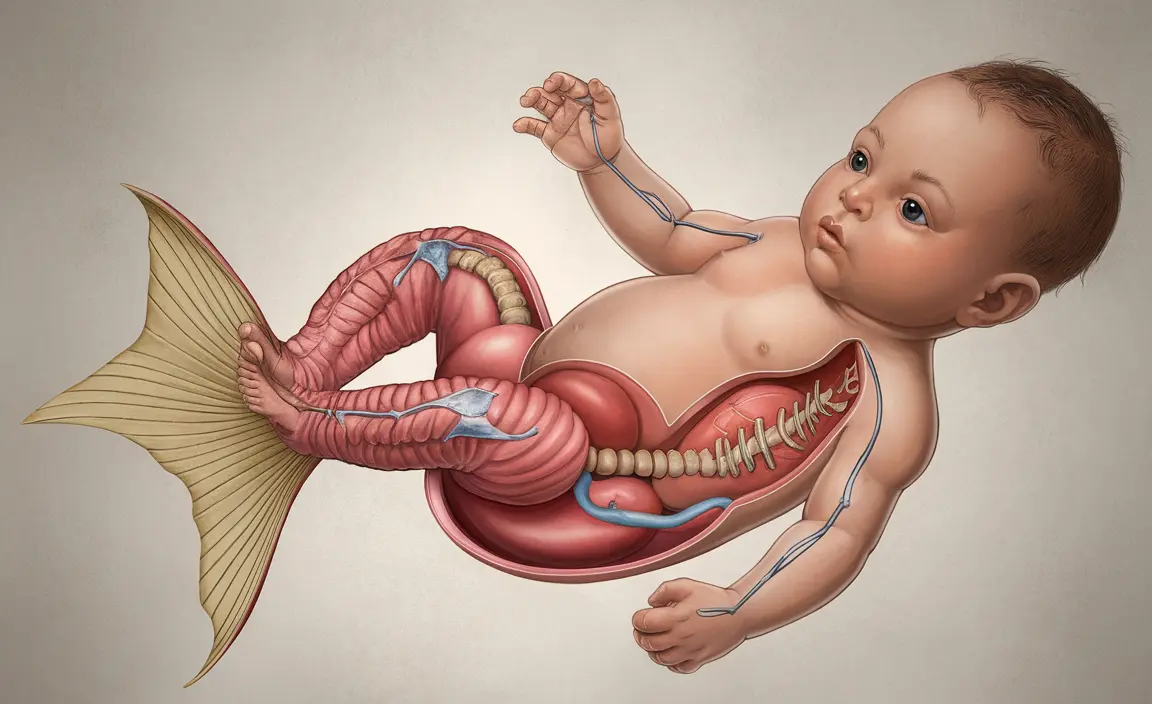Mermaid syndrome, medically known as sirenomelia, is an extremely rare congenital condition that affects the development of a baby's lower body. This condition, which occurs in approximately 1 in 100,000 live births, results in the fusion of the legs, giving rise to its colloquial name. Understanding this condition is crucial for medical professionals, affected families, and those seeking to learn more about rare genetic disorders.
This comprehensive guide will explore the causes, symptoms, diagnosis, and treatment options available for babies affected by mermaid syndrome, providing valuable information for healthcare providers and families facing this challenging condition.
Understanding the Condition
Mermaid syndrome is characterized by the complete or partial fusion of the lower limbs, creating an appearance reminiscent of a mermaid's tail. This rare developmental disorder typically occurs during the first month of pregnancy, affecting the formation of the lower body structures.
Key Characteristics
The condition involves more than just fused legs. Babies with mermaid syndrome often experience multiple complications affecting various body systems, including:
- Abnormal kidney development or missing kidneys
- Gastrointestinal complications
- Absent or malformed genitourinary system
- Spinal cord abnormalities
- Cardiac defects
Causes and Risk Factors
The exact cause of mermaid syndrome remains unclear, but researchers have identified several potential contributing factors:
- Genetic mutations
- Environmental factors during pregnancy
- Maternal diabetes
- Poor blood vessel development in the lower body
- Possible exposure to certain medications or toxins
Diagnosis and Detection
Early diagnosis of mermaid syndrome is crucial for proper medical planning and family preparation. Modern medical technology allows for detection during pregnancy through:
- Detailed ultrasound scans
- MRI imaging
- Genetic testing
- Maternal blood screening
Treatment Approaches
Managing mermaid syndrome requires a comprehensive, multidisciplinary approach. Treatment options may include:
- Immediate medical intervention after birth
- Surgical procedures to address organ abnormalities
- Specialized supportive care
- Physical therapy and rehabilitation
- Long-term medical management
Frequently Asked Questions
- What causes mermaid syndrome (sirenomelia) in babies and can it be prevented?
Mermaid syndrome's exact cause remains unknown, but it likely results from a combination of genetic and environmental factors during early fetal development. While complete prevention isn't currently possible, maintaining good prenatal health, managing diabetes during pregnancy, and avoiding harmful substances may reduce risks.
- What are the common symptoms and health problems associated with a baby born with mermaid syndrome?
Common symptoms include fused lower limbs, kidney abnormalities or absence, gastrointestinal defects, and problems with the genitourinary system. Many babies also experience cardiac issues and spinal abnormalities.
- How is mermaid syndrome diagnosed before birth and what tests are involved?
Diagnosis typically occurs during routine prenatal ultrasounds, usually around the second trimester. Additional diagnostic tools may include detailed 3D ultrasounds, MRI scans, and genetic testing to confirm the condition and assess its severity.
- What treatment options are available for babies born with mermaid syndrome and how effective are they?
Treatment typically involves immediate intensive care after birth, followed by surgical interventions to address specific complications. The effectiveness varies significantly depending on the severity of the condition and associated health problems.
- What is the typical outlook or survival rate for babies affected by mermaid syndrome?
The prognosis for babies with mermaid syndrome is generally challenging. Survival rates are low due to the severity of associated organ abnormalities, particularly kidney problems. However, some cases have better outcomes when detected early and managed with appropriate medical intervention.
While mermaid syndrome presents significant challenges, ongoing medical research and advanced surgical techniques continue to improve our understanding and management of this rare condition. Support from medical professionals and access to specialized care remain crucial for affected families.




